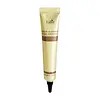What's inside
What's inside
 Key Ingredients
Key Ingredients

 Benefits
Benefits

 Concerns
Concerns

 Ingredients Side-by-side
Ingredients Side-by-side

Water
Skin ConditioningSodium Laureth Sulfate
CleansingSodium Lauryl Sulfate
CleansingCocamidopropyl Betaine
CleansingSodium Chloride
MaskingCocamide Mea
EmulsifyingGlycol Distearate
EmollientPolyquaternium-10
Sodium Benzoate
MaskingHydroxyacetophenone
AntioxidantPiroctone Olamine
PreservativeDisodium EDTA
Citric Acid
BufferingPPG-3 Caprylyl Ether
SolventQuaternium-80
Polyquaternium-7
Saponaria Officinalis Leaf Extract
AntimicrobialButylene Glycol
HumectantAcrylamidopropyltrimonium Chloride/Acrylamide Copolymer
Propylene Glycol
HumectantLavandula Angustifolia Flower Extract
CleansingMonarda Didyma Leaf Extract
Skin ConditioningMentha Piperita Leaf Extract
Skin ConditioningFreesia Refracta Extract
Skin ConditioningChamomilla Recutita Flower Extract
MaskingRosmarinus Officinalis Leaf Extract
Antimicrobial1,2-Hexanediol
Skin ConditioningEthylhexylglycerin
Skin ConditioningParfum
MaskingAlpha-Isomethyl Ionone
PerfumingCitronellol
PerfumingHexyl Cinnamal
PerfumingWater, Sodium Laureth Sulfate, Sodium Lauryl Sulfate, Cocamidopropyl Betaine, Sodium Chloride, Cocamide Mea, Glycol Distearate, Polyquaternium-10, Sodium Benzoate, Hydroxyacetophenone, Piroctone Olamine, Disodium EDTA, Citric Acid, PPG-3 Caprylyl Ether, Quaternium-80, Polyquaternium-7, Saponaria Officinalis Leaf Extract, Butylene Glycol, Acrylamidopropyltrimonium Chloride/Acrylamide Copolymer, Propylene Glycol, Lavandula Angustifolia Flower Extract, Monarda Didyma Leaf Extract, Mentha Piperita Leaf Extract, Freesia Refracta Extract, Chamomilla Recutita Flower Extract, Rosmarinus Officinalis Leaf Extract, 1,2-Hexanediol, Ethylhexylglycerin, Parfum, Alpha-Isomethyl Ionone, Citronellol, Hexyl Cinnamal
Water
Skin ConditioningCyclopentasiloxane
EmollientDimethicone
EmollientPropylene Glycol
HumectantHydroxyethyl Acrylate/Sodium Acryloyldimethyl Taurate Copolymer
Emulsion StabilisingHydrolyzed Collagen
EmollientSnail Secretion Filtrate
Skin ConditioningConvallaria Majalis Extract
Skin ConditioningNelumbo Nucifera Extract
Skin ConditioningCannabis Sativa Flower/Leaf/Stem Extract
AntioxidantLoess Extract
Skin ConditioningJasminum Sambac Flower Extract
MaskingCharcoal Extract
Skin ConditioningPolyacrylate-13
Polyisobutene
Polysorbate 20
EmulsifyingPEG-14m
Emulsion StabilisingHydroxyethylcellulose
Emulsion StabilisingSqualane
EmollientPolysorbate 60
EmulsifyingHydroxyacetophenone
AntioxidantParfum
MaskingWater, Cyclopentasiloxane, Dimethicone, Propylene Glycol, Hydroxyethyl Acrylate/Sodium Acryloyldimethyl Taurate Copolymer, Hydrolyzed Collagen, Snail Secretion Filtrate, Convallaria Majalis Extract, Nelumbo Nucifera Extract, Cannabis Sativa Flower/Leaf/Stem Extract, Loess Extract, Jasminum Sambac Flower Extract, Charcoal Extract, Polyacrylate-13, Polyisobutene, Polysorbate 20, PEG-14m, Hydroxyethylcellulose, Squalane, Polysorbate 60, Hydroxyacetophenone, Parfum
Ingredients Explained
These ingredients are found in both products.
Ingredients higher up in an ingredient list are typically present in a larger amount.
Hydroxyacetophenone is antioxidant with skin conditioning and soothing properties. It also boosts the efficiency of preservatives.
This ingredient is not irritating or sensitizing.
Parfum is a catch-all term for an ingredient or more that is used to give a scent to products.
Also called "fragrance", this ingredient can be a blend of hundreds of chemicals or plant oils. This means every product with "fragrance" or "parfum" in the ingredients list is a different mixture.
For instance, Habanolide is a proprietary trade name for a specific aroma chemical. When used as a fragrance ingredient in cosmetics, most aroma chemicals fall under the broad labeling category of “FRAGRANCE” or “PARFUM” according to EU and US regulations.
The term 'parfum' or 'fragrance' is not regulated in many countries. In many cases, it is up to the brand to define this term.
For instance, many brands choose to label themselves as "fragrance-free" because they are not using synthetic fragrances. However, their products may still contain ingredients such as essential oils that are considered a fragrance by INCI standards.
One example is Calendula flower extract. Calendula is an essential oil that still imparts a scent or 'fragrance'.
Depending on the blend, the ingredients in the mixture can cause allergies and sensitivities on the skin. Some ingredients that are known EU allergens include linalool and citronellol.
Parfum can also be used to mask or cover an unpleasant scent.
The bottom line is: not all fragrances/parfum/ingredients are created equally. If you are worried about fragrances, we recommend taking a closer look at an ingredient. And of course, we always recommend speaking with a professional.
Learn more about ParfumPropylene Glycol is an odorless, colorless liquid. As a humectant, it helps skin retain moisture. It also aids in delivering active ingredients.
Another role of this ingredient is preventing a product from melting or freezing. Propylene glycol also adds antimicrobrial properties to a product, elongating product lifespan.
This ingredient is considered an organic alcohol and commonly added into both cosmetics and foods.
Those with sensitive skin or conditions may develop a rash when using this ingredient.
Learn more about Propylene GlycolWater. It's the most common cosmetic ingredient of all. You'll usually see it at the top of ingredient lists, meaning that it makes up the largest part of the product.
So why is it so popular? Water most often acts as a solvent - this means that it helps dissolve other ingredients into the formulation.
You'll also recognize water as that liquid we all need to stay alive. If you see this, drink a glass of water. Stay hydrated!
Learn more about Water